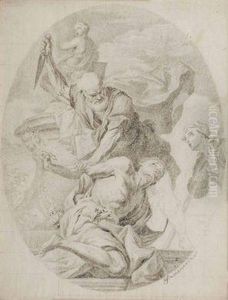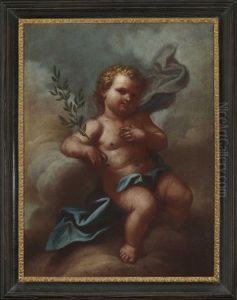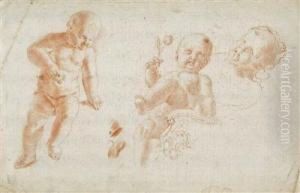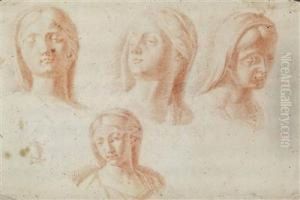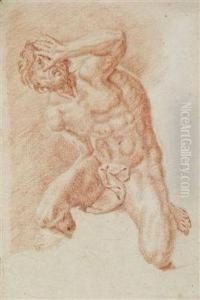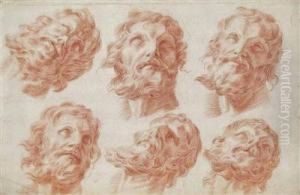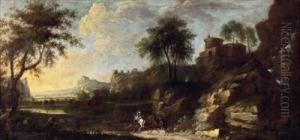Johann Georg Dominikus Grasmair Paintings
Johann Georg Dominikus Grasmair, born in 1685, was a Baroque sculptor whose work reflects the artistic trends and influences of his time, particularly within the region that is now known as Germany. Despite not being widely known compared to some of his contemporaries, Grasmair contributed to the rich tapestry of Baroque art with his distinctive sculptures and carvings, which often featured religious and mythological themes.
Grasmair's work was characterized by the dynamic movement and emotional expressiveness typical of the Baroque period. His sculptures displayed a mastery of form and detail, as well as an understanding of the human body and drapery. Unfortunately, due to the relatively limited spread of his influence and the overshadowing fame of other artists from the same era, detailed records of Grasmair's life and the full extent of his oeuvre are not as comprehensive as one would wish for a historical figure.
Not much is documented about Grasmair's training or early career, but it is known that he was active during the early 18th century, a time when the Baroque style was dominant in European art. His works were primarily commissioned by the Church and by wealthy patrons, which was common for artists of his time. Grasmair's sculptures would have adorned churches, public spaces, and the estates of his patrons, contributing to the beautification and the cultural enrichment of his environment.
Johann Georg Dominikus Grasmair passed away in 1750. His death marked the end of an era for his workshop and the local tradition he was a part of. Though he may not have achieved the lasting fame of some of his peers, his work remains a testament to the skill and artistry of sculptors in the Baroque period. Today, art historians and enthusiasts who study Grasmair's pieces can gain insight into the lesser-known contributors to the Baroque movement and appreciate the diverse range of talents that defined this flourishing period in art history.
